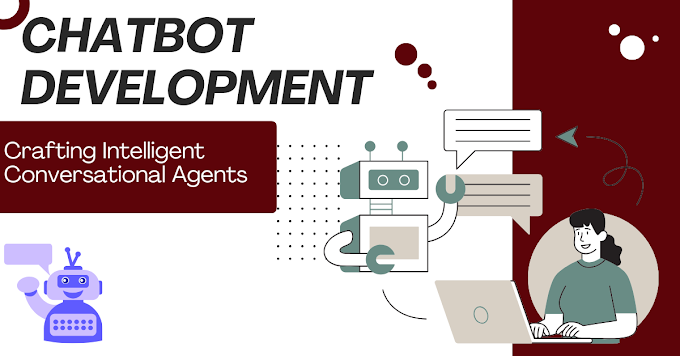Navigating the Depths of Backend Development: Building the Backbone of Web Applications
Introduction:
Backend development is the power behind web applications, managing data, logic, and server operations without direct user interaction. This article examines complex backend development, revealing the technologies, systems, and responsibilities that form the backbone of a robust, scalable web experience
Unveiling Backend Development:
1. Server-Side Languages: The Brains of the Operation
Backend development requires server-side languages, such as Node.js (JavaScript), Python, Ruby, or Java. These languages handle server logic, handle requests, and communicate with databases to ensure data integrity and security.
2. Databases: Warehouses of Information
Databases are an integral part of backend development for storing, retrieving, and managing data. SQL databases such as MySQL and PostgreSQL deal with structured data, while NoSQL databases such as MongoDB excel at managing unstructured or semi-structured data.
3. APIs (Application Programming Interfaces): Bridging Frontend and Backend
Backend frameworks, such as Express.js (Node.js), Django (Python), and Ruby on Rails (Ruby), accelerate development by providing a structured environment and reusable resources They keep projects healthy so that routing, HTTP request handling, and operations are facilitated by stored databases.
Tools of the Backend Trade:
1. Frameworks: Streamlining Development
Backend frameworks, such as Express.js (Node.js), Django (Python), and Ruby on Rails (Ruby), accelerate development by providing a structured environment and reusable resources They keep projects healthy that routing, HTTP request handling, and operations are facilitated by stored databases.
2. ORM (Object-Relational Mapping): Simplifying Database Interactions
ORM tools like Sequelize (Node.js), SQLAlchemy (Python), or ActiveRecord (Ruby) abstract the complexity of database interactions. They enable developers to work with databases using object-oriented programming principles, enhancing productivity and code maintainability.
3. Version Control Systems: Ensuring Code Integrity
Backend developers rely on version control systems like Git to manage and track changes in their code. This ensures collaboration among team members, helps identify and resolve issues, and maintains code integrity throughout the development process.
Advanced Backend Concepts:
1. Authentication and Authorization: Protecting User Data
Implementing secure authentication and authorization mechanisms, such as JWT (JSON Web Tokens) and OAuth, is crucial for protecting user data. Backend developers ensure that only authorized users access specific resources and that sensitive information remains confidential.
2. Containerization and Deployment: Scaling Efficiencies
Backend development embraces containerization with tools like Docker, allowing developers to package applications and dependencies into containers for consistent deployment across various environments. Cloud platforms like AWS, Azure, or Google Cloud provide scalable and reliable deployment solutions.
Ensuring Reliability and Performance:
1. Testing: The Guardian of Code Quality
Backend developers employ testing practices, including unit testing and integration testing, to ensure the reliability and stability of their code. Testing libraries like Jest, Mocha, or pytest help identify and rectify issues early in the development process.
2. Continuous Integration and Continuous Deployment (CI/CD): Automating Workflows
Integrating CI/CD tools like Jenkins, Travis CI, or GitHub Actions automates testing and deployment workflows. This accelerates development cycles, enhances collaboration, and ensures the consistent delivery of high-quality code.
Conclusion:
Backend development is the unsung hero of web applications, orchestrating the seamless functioning of websites and ensuring data integrity, security, and performance. As technology evolves, backend developers continue to explore innovative solutions and best practices to meet the demands of an ever-changing digital landscape. Whether you're a seasoned backend developer or just starting, understanding these foundational aspects is crucial for building robust and scalable web applications.
FAQ
1. What is Backend Development?
Backend development involves building and maintaining the server-side logic, databases, and APIs that power web applications. It focuses on data management, request processing, server performance, and security monitoring, which are invisible to users but important to the overall performance of a website or application2. Which Server-Side Languages are Commonly Used in Backend Development?
Several server-side languages are popular in backend development, including Node.js (JavaScript), Python, Ruby, and Java. Each language has its strengths and use cases, allowing developers to choose based on project requirements and personal preferences.
3. How Do APIs Contribute to Backend Development?
In backend development, APIs (Application Programming Interfaces) act as a bridge between the front and back end, allowing for seamless data exchange. Backend developers create APIs to define how software components should interact, enabling you to create dynamic and interactive web applications.
4. Why is Containerization Important in Backend Development?
Containerization, exemplified by tools like Docker, continues to be important in backend development for packaging applications and their dependencies. This ensures that an application works reliably across environments, simplifies deployment, and increases scalability.
5. What Role Does Continuous Integration and Continuous Deployment (CI/CD) Play in Backend Development?
CI/CD practices enable testing and deployment in backend development. Tools like Jenkins, Travis CI, or GitHub Actions help optimize code, accelerate development cycles, coordinate development teams, and ensure consistent and efficient delivery
FOR MORE TIPS ON WEB DEVELOPMENT VISIT OUR WEBSITE Ustudy
Roadmap to Becoming a Full Stack Developer:
https://ustudywith.blogspot.com/2024/01/roadmap-to-becoming-full-stack-developer.html
Displaying the world of frontend development: Crafting user experiences
https://ustudywith.blogspot.com/2024/01/displaying-world-of-frontend.html








